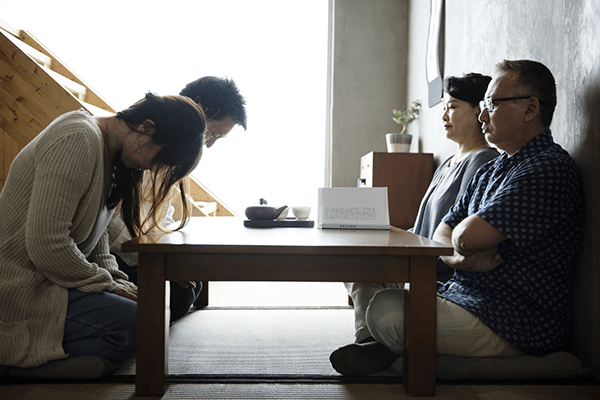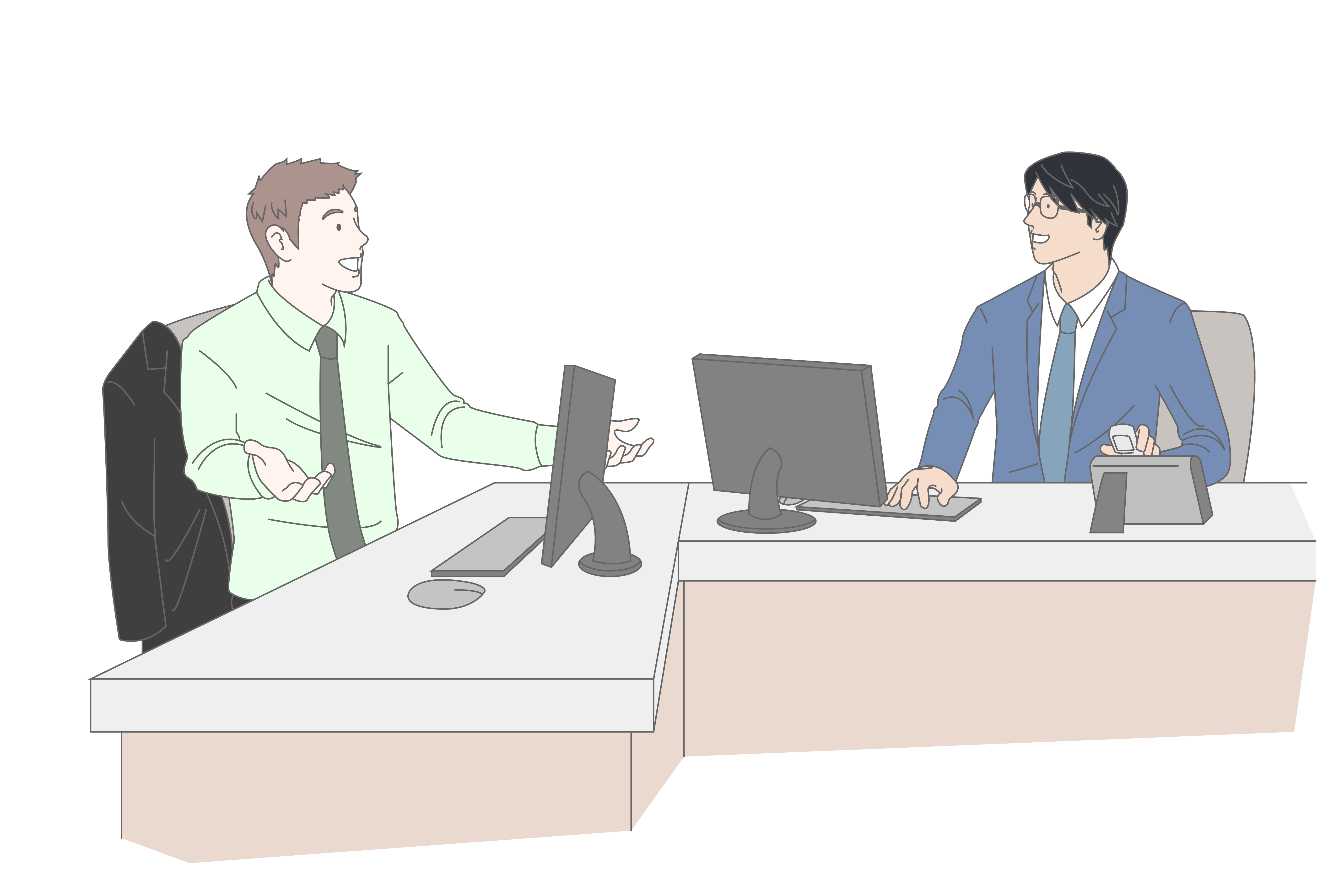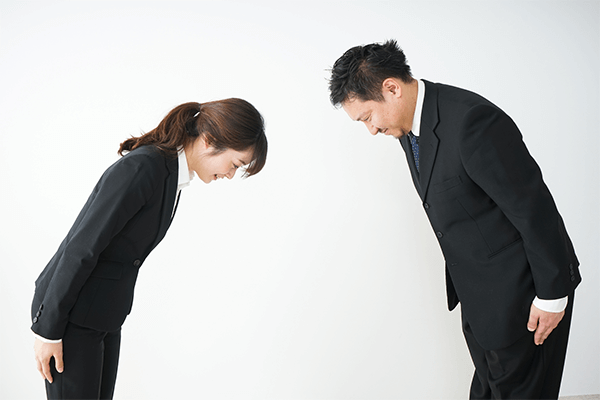INTRODUCE
Bowing is a big part of Japanese culture that might be new for many foreigners. Explaining it can help them avoid awkward and embarrassing situations.

PRESENT
STEP A EXPRESSIONS
I. Go over the expressions with your tutor.

1. Something is deeply ingrained when it is so established that it is hard to change.
Showing respect for one’s elders is deeply ingrained in most Asian cultures.

2. A slight/deep bow is the act of bending the head or body a little/a lot to greet someone or show respect.
You should greet your future in-laws with a deep bow when you meet them for the first time.

3. To convey something means to express it.
In Japan, adding “-san” after a name conveys respect.
II. How do you convey respect to these people? Talk about it using the expressions above.

your tutor

your grandparents

your coworkers
STEP B PRONUNCIATION
| Phrase | Example |
|---|---|
deeply ingrained / deep-lee-yin-greynd / |
Celebrating the different seasons is / deep-lee-yin-greynd / in Japanese culture. |
UNDERSTAND
SPEAKING
Naoki is chatting with his Australian coworker, Andy.
 |
- Andy:
Naoki, why on earth were you bowing while talking on the phone? You know they can’t see you, right? (laughs)
- Naoki:
What? Oh. Yeah… (laughs) I honestly don’t even notice anymore. It’s become a habit because bowing is so deeply ingrained in Japanese culture. I bet you won’t notice it anymore after a few months.
- Andy:
I hope I get to that point someday! I’m still not even sure when to bow and what kind of bow to use sometimes. It seems so complicated!
- Naoki:
I know, but if you’re going to live in Japan long-term, it’s important to understand it. Besides, your clients will think more of you if you do it correctly. Basically, there are two types of bows that you need to remember: the slight bow and the deep bow.
- Andy:
What’s the difference?
- Naoki:
You use a slight bow to greet or thank your friends or coworkers. A deep bow, on the other hand, conveys intense respect or apology. It’s good to use with your boss or your clients. Oh, and if you want to shake their hands, do it after you bow. It’s weird to do both at the same time like Eric did last year. (laughs)
- Andy:
Wait, let me write all that down!
TRIVIA
Have you ever thought about why people bow or shake hands? Some experts believe that bowing was used to show others that they have the power to cut your head off. Similarly, handshaking was a way to show others that you don’t have a weapon.


PRACTICE
STEP A EXERCISE
Rephrase the sentences using the expressions in the box. The form of some expressions may need to be changed.
- Learning about another country’s customs before traveling there shows respect for the culture.
- Tipping hotel and restaurant staff is a big part of American culture.
- Yoichi always greets me with a nod when he sees me at work.

STEP B EXERCISE
Follow the instructions in parentheses using the expressions in the box. The form of some expressions may need to be changed.
1.
Tutor: I’ve noticed that you always take your shoes off before you enter your house.
Student: (Say that it’s a habit you’ve had since you were young.)
2.
Tutor: My Japanese neighbor gave me an oseibo gift!
Student: (Say that she did that to show her appreciation for his/her help last month.)
3.
Tutor: I’m going to Japan for a business trip. How should I greet the company directors?
Student: (Say that he/she should greet them very formally when he/she first meets them.)

CHALLENGE
Challenge 1
Your foreign friend will be coming to Japan for a business trip next month for the first time. He/She called you to ask for some advice about Japanese etiquette. Answer his/her questions.
Today's Expressions
- a slight/deep bow
- convey something
- deeply ingrained

Challenge 2
Discuss your ideas.
 If Time
If TimeAllows
1 BOWING |
2 DEEPLY INGRAINED HABITS |
3 CONVEYING EMOTIONS |
|---|---|---|
|
1 BOWING
|
2DEEPLY INGRAINED HABITS
|
3CONVEYING EMOTIONS
|
FEEDBACK
I can talk about bowing.
LESSON GOAL ACHIEVEMENT
-
4
Very GoodCould complete the task with ease
-
3
GoodCould complete the task with some clarifications
-
2
FairCould complete the task with additional instructions
-
1
PoorCould somehow complete the task with difficulty
PERSONALIZED FEEDBACK
- RANGE
the ability to use a wide variety of vocabulary - ACCURACY
the ability to speak correctly - FLUENCY
the ability to speak smoothly without pauses or fillers - COHERENCE
the ability to speak logically and at length

